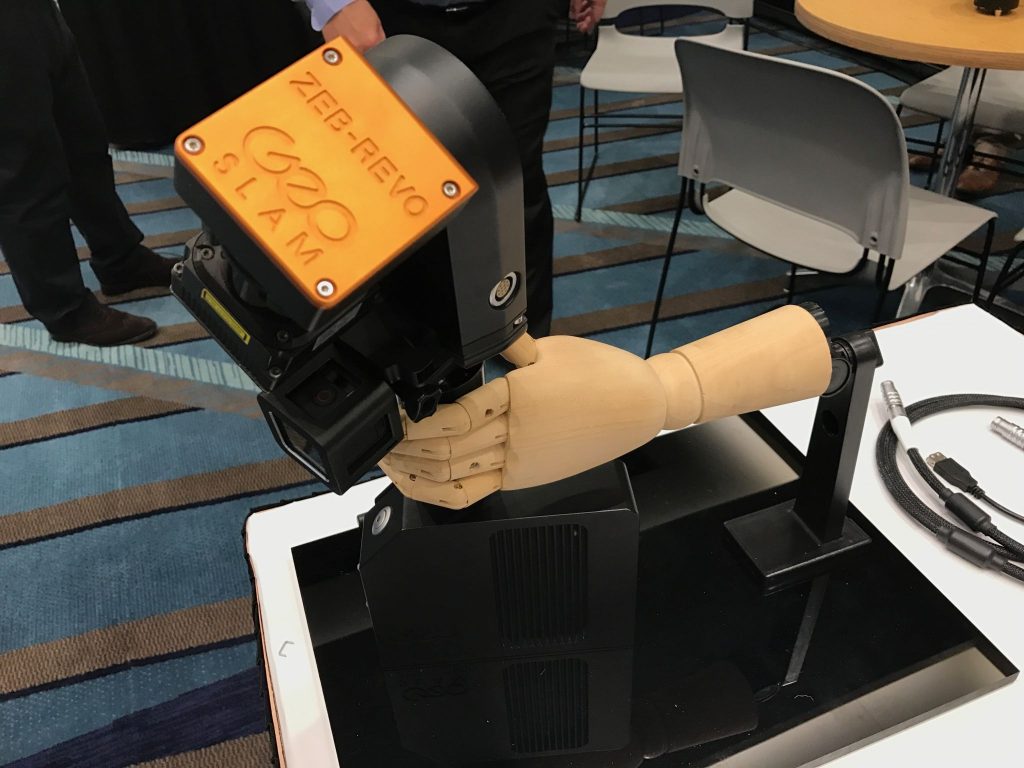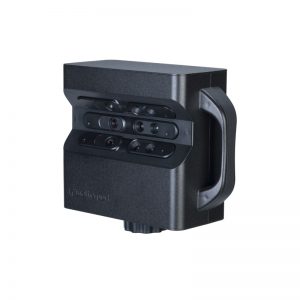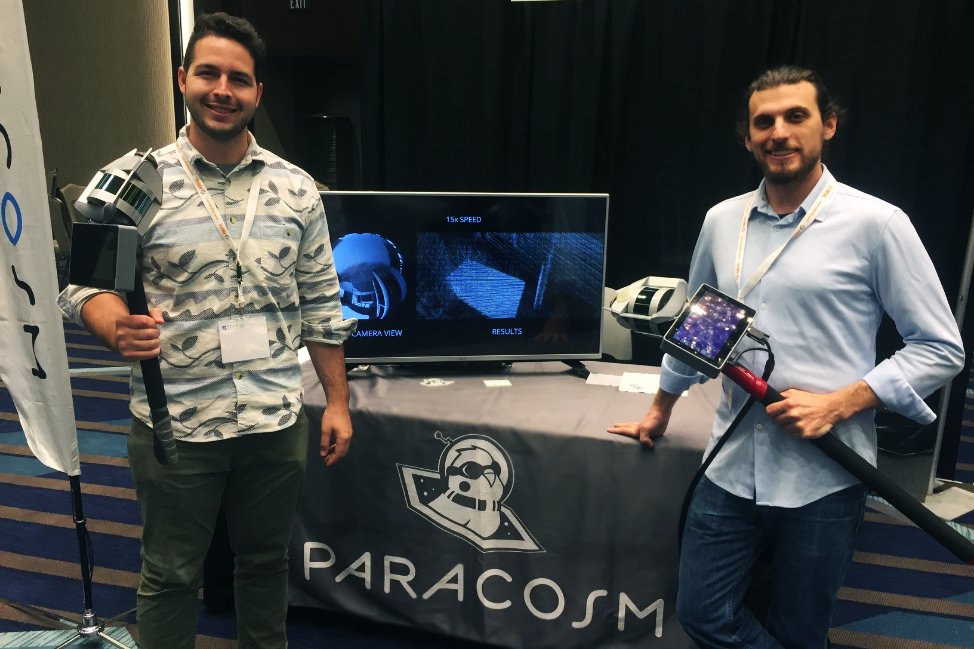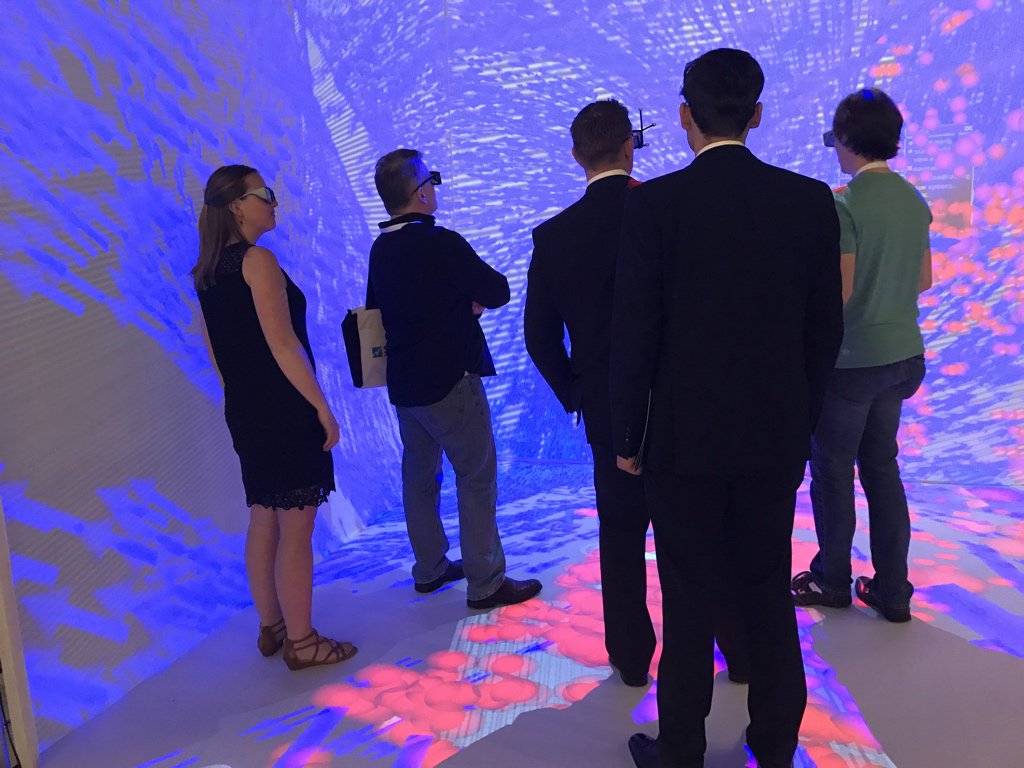Since we pack the SPAR 3D Conference and Expo full of the latest developments in 3D technology, that makes it a good place to check in on industry trends, and make some predictions about the direction we’re headed in. Here’s what I learned this year.
We’re Changing How We Think about Accuracy
On the show floor in 2017, accuracy was not the only concern. This is very noteworthy for an industry that has seen some, uh, pretty enthusiastic arguments about the topic in the past. That’s not to say that we no longer value laser scanners that promise survey-grade results (we do, and always will). It’s to say that the market is expanding, and starting to offer a lot of scanning hardware that doesn’t market accuracy as its greatest draw.
For instance, Leica is moving in this direction with the BLK 360. The primary selling point of this device is its accessibility—take it out of your shoulder bag, mount it on a small tripod, hit a button, and scan. Yes, it’s an accurate device, but looking at it solely in terms of accuracy misses the point.

The GeoSLAM ZEB-REVO fits in any hand, even wooden ones
The SPAR 2017 floor saw a number of other companies emphasizing accuracy less than ease of movement, real-time feedback, and versatility. DotProduct was on hand showing their versatile DPI scanning tablets and software. GeoSLAM was also there with its handheld ZEB-REVO device—long a favorite for its lightweight and quick scanning. The company’s big announcement in 2017 was a new upgrade for real-time scanning feedback. In other words, they’re not making it more accurate, but instead making it even easier to use.
Kaarta’s Contour hits a similar market need. It’s handheld, which means you can use it to capture a building on foot and view the results on the touch screen to ensure full coverage. Once you’re done, the SLAM algorithms that Kaarta uses to power the device enable a cool trick: Simply strap the company’s Stencil to a UAV and finish the job from the air, even without GPS.
Again, these devices are as accurate as you need them to be, but not necessarily the most accurate thing available. Here at SPAR3D.com, we like to say that the market is starting to emphasize hardware that is fit for purpose rather than extremely high accuracy, and this year’s expo floor proved us right.
Visualization First, Measurement Second

Matterport’s Pro 3D camera
Part and parcel to this change in our attitudes toward accuracy is a newfound focus on visualization. Take NCTech’s new LASiris VR, which integrates a lidar sensor and a 360° HDR camera into a single, low-cost capture device. The company has been careful not to call the LASiris VR a “laser scanner,” instead selling it as a “3D reality capture camera.” They see it as a device that primarily captures good, clear VR experiences… and also happens to take measurements.
For further proof of the new emphasis on visualization tools, look at Matterport. The company did brisk business at SPAR this year, despite not selling any products that include lidar, or are even designed to work with lidar. Matterport’s cameras are meant primarily for 3D capture and visualization, and they’re really good at it. You can get measurements out of them, and even perform scan-to-BIM if you want, but, again, that’s not the primary selling point.
These products are among a select group flipping the value equation for capture devices, which usually emphasize measurement first and visualization second. I would look for more devices to hit this market segment in the future.
Software, Software, Software

Paracosm in their booth
Software continued to develop in interesting ways this year. Most obviously, this means industry veterans like Bentley and Autodesk have continued to expand their solutions and integrations.
But there are also a number of smaller companies doing very interesting things with 3D data processing. That covers industry favorites like SKUR, Arithmetica, and ClearEdge, who have all seen their market shares (and often their booths) grow in the past few years. It also covers brand-new companies like CurvSurf, who make an automatic object recognition algorithm for point clouds that you’ll likely hear a lot about in coming years.
Maybe the most unexpected trend in the software arena, however, is the rise of software companies that look like hardware companies. Here, I’m thinking particularly of Paracosm and Kaarta, two firms that sell hardware… but only as a means to enabling their longterm software vision.

Kaarta’s Contour handheld scanner
Paracosm, for instance, recently told me they designed their lidar device to capture the 3D data needed to feed SLAM algorithms and eventually, to feed comprehensive software for construction analytics.
Kaarta put it more directly—They’re an algorithm company that happens to make hardware out of off-the-shelf products. They told me have no allegiance to any one sensor or technology, and will happily move on to the next, thing if they need to.
AR/VR: Signs of a Vital Industry

NCTech gave VR demos to show off the data from its new capture device
In 2017, augmented and virtual reality were unavoidable. That meant a hologram room, and many well established companies showing off their latest AR and VR—including Trimble and NCTech. These technologies were sexy, that’s for sure, but they also proved themselves to be more than just toys.
We saw the real value of these technologies from the likes of Gensler, who showed how augmented reality could be used to review designs in situ. Or Martin Bros’ HoloLens evangelist Cody Nowak, who demonstrated how the tech can be used to give field workers “x-ray vision” to see the bars and wires obscured in the floor and walls.
You may think that AR and VR are too obvious to talk about in this piece, but I’d disagree–their presence at the show told us a lot about the state of the 3D tech industry in 2017.
Where mobile mapping was the big deal a few years back, now it’s visualization technologies. The industry has moved on, and continues to move on at a fast clip. In other words, the industry is as vibrant as ever.









